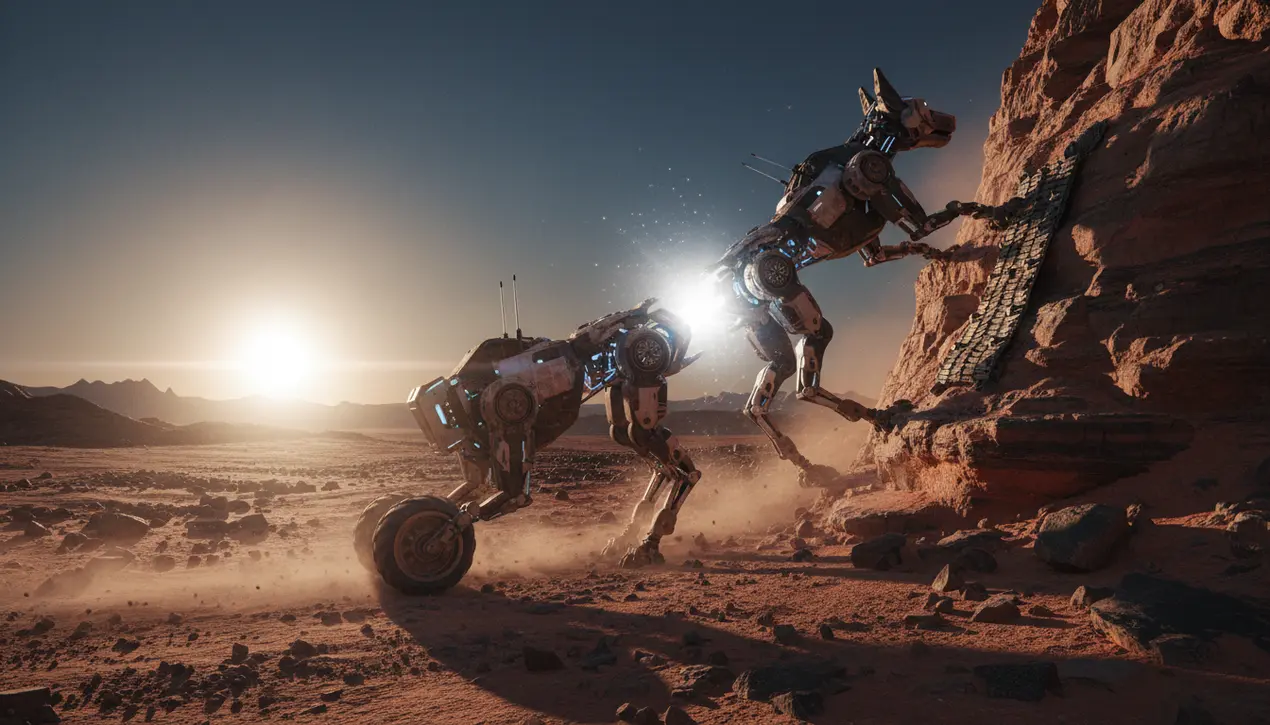
AIroboticsHumanoid Robots
All-terrain modular dog-shaped robot splits and rejoins itself.
TH
Thomas Green
3 hours ago7 min read4 comments
In a leap forward for robotic adaptability that feels ripped from the pages of a sci-fi novel, engineers have unveiled a modular, dog-shaped robot capable of splitting its own body in two and seamlessly rejoining, a feat of engineering that fundamentally reconfigures our concept of mobile machinery. This isn't merely an incremental update; it's a paradigm shift, echoing the transformative visions of pioneers like Elon Musk who dream of multi-planetary, adaptable systems.The core innovation lies in its direct-drive technology and modular architecture, allowing the unit to operate as a stable, four-legged 'canine' for traversing rough, uneven terrain much like the Mars rovers navigate the Red Planet's unforgiving landscape, or to fission into two independent, two-legged segments. These halves can then perform coordinated tasks—imagine one unit rolling on wheels at high speed for reconnaissance while its twin climbs a vertical structure to gain a tactical vantage point, their movements as synchronized as a binary star system.The implications cascade across multiple frontiers: in disaster response, a single deployment could see one module navigating collapsed rubble to locate survivors while its counterpart establishes a communication relay, effectively doubling the mission's operational capacity without doubling the logistical footprint. For space exploration, this technology suggests future craft that could land as a single robust unit for stability, then divide to cover vastly more lunar or Martian terrain, their ability to rejoin ensuring they can consolidate power and computing resources.The drive toward such biomimetic, polymorphic machines marks a critical evolution from the single-purpose robots of the past decade, pushing us closer to the kind of general-purpose automata that could serve as true partners in hostile environments, from the deep sea to the asteroid belt. While challenges in power management for the separated units and the complex software for autonomous decision-making during split-phase operations remain significant hurdles, the prototype successfully demonstrates a future where robots are not just tools, but dynamic, reconfigurable systems. This development doesn't just add another robot to the lab; it fundamentally expands the playbook for what robots can be and do, bringing us one step closer to a future where our mechanical helpers are as versatile and resilient as the challenges we ask them to face.
#featured
#robotics
#modular robot
#all-terrain
#dog-shaped robot
#transformation
Stay Informed. Act Smarter.
Get weekly highlights, major headlines, and expert insights — then put your knowledge to work in our live prediction markets.
Related News
Comments
Loading comments...
© 2025 Outpoll Service LTD. All rights reserved.